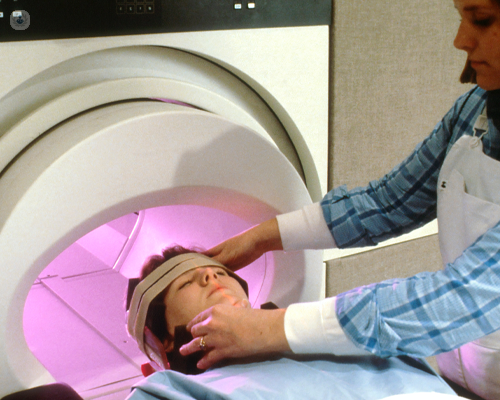Meningioma: What's the treatment process?
Written in association with:The treatment process for meningioma, a type of tumour that arises from the meninges (the protective membranes covering the brain and spinal cord), depends on several factors such as the size, location, growth rate, and symptoms caused by the tumour. Meningiomas are usually benign (non-cancerous). It's rare that they are malignant or cause significant symptoms due to their location. Most meningiomas are incidental findings discovered on scans investigating symptoms such as headache. Meningioma may not be the cause of headaches. In this article, leading consultant neurosurgeon Mr Andrew Kay provides an overview of the treatment process.

Observation (Watchful waiting)
In cases where the meningioma is small, slow-growing, and not causing any symptoms, a ‘watch-and-wait’ approach might be taken. This involves regular monitoring with periodic imaging scans, such as MRI, to track the tumour’s growth. Most meningiomas are incidental findings and do not cause symptoms, so treatment is unnecessary. In most cases, observation with surveillance scans is all that is required to monitor the situation.
Surgical removal
Some meningiomas require surgery, for example if it's large, growing, or causing symptoms like headaches, seizures or neurological deficits. The goal of surgery is to remove as much of the tumour as possible without damaging the surrounding brain tissue. Surgical approaches may vary depending on the tumour's location:
- Complete removal: If the tumour is in an accessible area, surgeons aim to remove the entire mass.
- Partial removal: In some cases, the entire tumour cannot be safely removed, especially if it's located near critical brain structures. In such situations, a portion of the tumour is left behind, and further treatments like radiation therapy may be considered.
Usually, nearly all or most of the tumours can be removed; some are best treated with a combination of surgery and radiotherapy.
Radiation therapy
Radiation therapy may be recommended for small growing tumours to avoid surgery or small tumour recurrences after surgery - and for the rare malignant meningioma. There are different types of radiation therapy used in meningioma treatment:
- Fractionated radiotherapy: Also know as external beam radiation, it's typically administered in small doses, five days a week for six weeks, as an out-patient. It involves directing high-energy radiation at the tumour to shrink or control its growth. It's often used post-surgery to target any remaining tumour cells.
- Stereotactic radiosurgery (SRS): This is a precise form of radiation treatment where focused beams are aimed at the tumour, minimising damage to surrounding tissue. It's often used for small or hard-to-reach tumours and can be an option instead of surgery in certain cases. It's usually one or two higher dose treatments but is only suitable for small tumour targets as an out-patient.
Supportive care and rehabilitation
Patients with meningiomas may experience symptoms such as headaches, seizures or neurological impairments that affect movement, speech or vision. Supportive care, including medications for seizure control or pain management, is often part of the treatment plan. Rehabilitation therapies, such as physical, occupational or speech therapy, may be necessary to help patients recover function lost due to the tumour or its treatment.
Follow-up care
Long-term follow-up with regular imaging scans is crucial, as meningiomas can recur, particularly if they weren’t completely removed during surgery. Even benign meningiomas require periodic monitoring to ensure they are not growing back.
In summary, the treatment process for meningioma is highly individualised and requires bespoke management strategies by experts in the field. It may involve follow-up scans to determine the rate of growth and which ones may need treatment, as well as observation, surgery, radiation, and in some cases, supportive care. The chosen approach depends on the tumour’s characteristics and the patient’s overall health.
Are you looking for top meningioma treatment? Arrange a consultation with Mr Kay via his Top Doctors profile.


